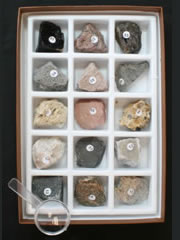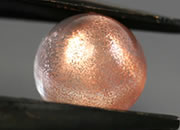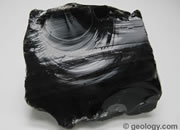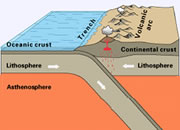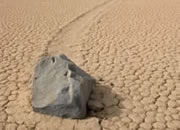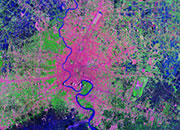CV1801 Elements of fraud.
[Name of plaintiff] claims that [name of defendant] defrauded [him] by making a false [oral/written], statement of fact that caused [him] harm. To succeed in this claim, [name of plaintiff] must prove each of the following by clear and convincing evidence:
(1) [name of defendant] made a false statement about an important fact; and
(2) either [name of defendant] made the statement knowing it was false, or [he] made the statement recklessly and without regard for its truth; and
(3) [name of defendant] intended that [name of plaintiff] would rely on the statement; and
(4) [name of plaintiff] reasonably relied on the statement; and
(5) [name of plaintiff] suffered damages as a result of relying on the statement.
I will provide you with more information about each of these in the following instructions.
References
Yazd v. Woodside Homes Corp., 143 P.3d 283 (Utah 2006).Armed Forces Insurance Exchange v. Harrison, 70 P.3d 35 (Utah 2003).
Gold Standard, Inc. v. Getty Oil Co., 915 P.2d 1060 (Utah 1996).
Taylor v. Gasor, Inc., 607 P.2d 293 (Utah 1990).
Dilworth v. Lauritzen, 18 Utah 2d 386, 424 P.2d 136 (1967).
Child v. Hayward, 16 Utah 2d 351, 400 P.2d 758 (1965).
See Instruction CV118, Clear and convincing evidence.
MUJI 1st Instruction
17.1; 17.9Committee Notes
This instruction and the instructions that follow use the term “important” rather than “material.” The Committee made this change because jurors are more likely to understand the former term, and because Utah case law defines materiality in terms of importance. See, e.g., Yazd v. Woodside Homes Corp., 143 P.3d 283 ¶ 34 (Utah 2006) (“To be material, the information must be ‘important.’”).
Although some of the instructions in this section may be useful in negligent misrepresentation cases, they do not purport to comprise a complete set of instructions for such cases.
CV1802 Elements of negligent misrepresentation.
[Name of plaintiff] claims [he] was harmed when [name of defendant] negligently misrepresented an important fact. To succeed in this claim [name of plaintiff] must prove that:
(1) [name of defendant] represented to [name of plaintiff] that an important fact was true;
(2) [name of defendant]’s representation of fact was not true;
(3) [name of defendant] failed to use reasonable care to determine whether the representation was true;
(4) [name of defendant] was in a better position than [name of plaintiff] to know the true facts;
(5) [name of defendant] had a financial interest in the transaction;
(6) [name of plaintiff] relied on the representation and it was reasonable for [him] to do so; and
(7) [name of plaintiff] suffered damage as a result of relying on the representation.
References
West v. Inter-Financial, Inc., 139 P.3d 1059, Court of Appeals (Utah 2006).Smith v. Frandsen, 94 P.3rd 919, (Utah Sup. Ct. 2004).
Price v Orem Investment Company v. Rollins, Brown & Gunnel, Inc., 713 P.2d 55 (Utah Sup. Ct. 1986).
Jardine v. Brunswick Corporation, 423 P.2d 659 (Utah Sup. Ct. 1967).
Restatement 2d Torts, Section 552.
Committee Notes
The standard of proof for negligent misrepresentation has not been established in Utah. Because a different standard is not stated in the instruction, this instruction assumes the burden to be preponderance of the evidence, rather than clear and convincing evidence. Compare State ex rel. Nichols v. Safeco Ins. Co., 100 N.M. 440, 671 P.2d 1151, 1154, certiorari denied 100 N.M. 327, 670 P.2d 581 (1983) and Hughes v. Holt, 140 Vt. 38, 435 A.2d 687, 689. (1981) (preponderance) with Duffy v. Brown, 708 P.2d 433, 437 (Wyo.1985) (clear and convincing).
CV1803 Reckless false statement.
A false statement is made recklessly if [name of defendant] knew that [he] did not have sufficient knowledge to make the statement.
References
Kuhre v. Goodfellow, 2003 UT APP 1, 69 P.3d 286.Prince v. Bear River Mut. Ins. Co., 2002 UT 68, 56 P.3d 524.
Rawson v. Conover, 2001 UT 24, 20 P.3d 876 (“To have made a false representation recklessly, defendants would have to know that they had insufficient knowledge upon which to base the representation made.”)
MUJI 1st Instruction
17.2CV1804 Recovery for misrepresentation of fact.
You must decide whether the defendant’s statement was a representation of fact as opposed to an opinion. Generally, a plaintiff may recover for fraud only if the defendant’s statements were misrepresentations of facts.
References
Cerritos Trucking Co. v. Utah Venture No. 1, 645 P.2d 608 (Utah 1982).MUJI 1st Instruction
17.3; 17.4CV1805 Promises and statements of future performance.
A promise about a future act is a false statement of fact if [name of plaintiff] proves that [name of defendant]:
(1) never intended to keep the promise; and
(2) made the promise for the purpose of deceiving [name of plaintiff].
References
Cerritos Trucking Co. v. Utah Venture No. 1, 645 P.2d 608 (Utah 1982)Hull v. Flanders, 83 Utah 158, 27 P.2d 56 (1933)
MUJI 1st Instruction
17.5CV1806 Important statement of fact.
A statement of fact is important if knowing that it is false would influence a reasonable person’s judgment, or [his] decision to act or not to act.
References
Yazd v. Woodside Homes Corp., 2006 UT 47, 143 P.3d 283.Walter v. Stewart, 2003 Utah App. 86, 67 P.3d 1042.
MUJI 1st Instruction
17.6CV1807 Duty to speak the whole truth.
If [name of defendant] made a statement, then [he] had a duty to tell the truth about the matter, to make a fair disclosure, and to prevent a partial statement from being misleading or giving a false impression.
References
Fraud and Deceit, AmJur 2d, Section 209.CV1808 Intent to induce reliance.
You must decide whether [name of defendant] intended [name of plaintiff] to rely on a false statement, even though [name of defendant] did not make it directly to [name of plaintiff].
[Name of defendant] intended [name of plaintiff] to rely on the false statement if
[(1) [Name of defendant] made the statement to a group of people that included [name of plaintiff]].
[(2) [Name of defendant] made the statement to another person, with the intent or the belief that it would be communicated to [name of plaintiff]].
References
Ellis v. Hale, 373 P.2d 382 (1962)MUJI 1st Instruction
17.7Committee Notes
The judge should instruct only on the circumstances for which there is evidence.
CV1809 Intent.
Intent ordinarily cannot be proved directly because there is no way to read people’s minds. However, you may determine intent from the surrounding circumstances and find that [name of defendant] intended the natural and probable consequences of acts done knowingly. You may consider any statement made or acts done by [name of defendant] and all other facts and circumstances that may show intent.
References
Anderson v. Kriser, 2011 UT 66 (Plaintiff must prove by clear and convincing evidence that the defendant had actual knowledge of the information that the defendant failed to disclose on a fraudulent concealment claim.)Deseret Federal Savings and Loan Assn v. United States Fidelity & Guaranty Co., 714 P.2d 1143, 1146 (Utah 1986).
Hoffman v. Life Insurance Company of No. America, 669 P.2d 410, 420 (Utah 1983).
See Instruction CV120, Direct and circumstantial evidence.
CV1810 Reasonable reliance.
In deciding whether [name of plaintiff]’s reliance on the false statement was reasonable, you must take into account all relevant circumstances, such as [his] age, mental capacity, knowledge, experience, and [his] relationship to [name of defendant].
References
Mikkelson v. Quail Valley Realty, 641 P.2d 124 (Utah 1982)Berkeley Bank for Coops. v. Meibos, 607 P.2d 1369 (Utah 1980)
MUJI 1st Instruction
17.8CV1811 Concealment or fraudulent non-disclosure.
I have determined that [name of plaintiff] was in a [type of relationship] that gave [name of defendant] a duty to disclose an important fact to [name of plaintiff]. You must decide whether [name of defendant] failed to disclose an important fact. To establish that [name of defendant] failed to disclose an important fact, [name of plaintiff] must prove all of the following:
(1) that [name of defendant] knew [describe the important fact] and failed to disclose it to [name of plaintiff];
(2) that [name of plaintiff] did not know [describe the important fact]; and
(3) that [name of defendant]’s failure to disclose [describe the important fact] was a substantial factor in causing [name of plaintiff]’s damages.
References
Anderson v. Kriser, 2011 UT 66.Gilbert Development Corp., v. Wardley Corp., 2010 UT App 361.
Yazd v. Woodside, 143 P.3d 283 (Utah 2006).
Moore v. Smith, 158 P.3d 561 (Utah App. 2007).
Committee Notes
This instruction should be given only if the Court has determined that a special relationship imposing the higher duty is established as a matter of law. Moore v. Smith, 158 P.3d 561 (Utah App. 2007).
CV1812 Compensatory damages.
If you decide that [name of defendant] defrauded [name of plaintiff], then you must also decide how much money is needed to fairly compensate [name of plaintiff] for any damages caused by the fraud.
You may award damages for the harm [name of plaintiff] experienced because of [name of defendant]’s fraud as long as you determine that the damages were reasonably foreseeable, and that [name of plaintiff] has proven these damages with reasonable certainty. [Name of plaintiff] claims the following damages:
[(1) the difference between the value of the property that [name of plaintiff] [bought/sold] and the value the same property would have had if [name of defendant]’s statements about it had been true.]
[(2) loss of good will;]
[(3) expenditures in mitigation of damages;]
[(4) lost earnings;]
[(5) loss of interest on loans required to finance [describe the loss]]
[(6) lost profits;]
[(7) emotional distress;]
[(8) describe other items claimed.]
References
Dugan v. Jones, 615 P.2d 1239 (Utah 1980)Lamb v. Bangart, 525 P.2d 602 (Utah 1974)
Dilworth v. Lauritzen, 424 P.2d 136 (Utah 1967)
Restatement (Second) of Torts, § 549
Campbell v. State Farm Mutual Automobile Ins. Co., 65 P.3d 1134 (2001)
Ong International (U.S.A.) Inc., v. 11th Avenue Corp., 850 P.2d 447 (1993)
Crookston v. Fire Ins. Exch., 817 P.2d 789 (Utah 1991)
MUJI 1st Instruction
17.11Committee Notes
The judge should instruct only on the damanges for which there is evidence. The judge should describe for the jury which of these elements of damages are economic and which are non-economic so that the jury can differentiate them in the verdict form.
This instruction expands MUJI 17.11 to address a broader range of fraud cases. This instruction states the traditional measure of damages in fraud cases involving the purchase or sale of property, as recognized in Dugan v. Jones, 615 P.2d 1239 (Utah 1980) (real estate), Lamb v. Bangart, 525 P.2d 602 (Utah 1974) (livestock), Dilworth v. Lauritzen, 424 P.2d 136 (Utah 1967) (distributorship) and others.
The instruction also includes loss suffered in reliance on a fraudulent misrepresentation, even if there is not any purchase or sale between the plaintiff and defendant. This situation is presented in a variety of cases: e.g., where the plaintiff is fraudulently induced to extend money or credit, or where the plaintiff is fraudulently induced to purchase or use an article which is inappropriate for the intended use. See Restatement (Second) of Torts § 549, and comments thereto.
CV1899 Special verdict form.
Please answer the following questions based on the instructions the court has given you.
(1) Do you find by clear and convincing evidence that [name of defendant] committed fraud on [name of plaintiff]?
Yes_____ No_____
(2) If you answered “yes” to question (1), do you find by clear and convincing evidence that such conduct was a cause of damage to [name of plaintiff]?
Yes_____ No_____
(3) If you answered “yes” to question number (2), what if any damages do you award [name of plaintiff]? (Counsel should specify the type of economic and non-economic damages so the judge can calculate prejudgment interest.)
Economic Damages $_______
Non-Economic Damages $_______
______________________ ______________________________
Date Jury Foreperson


